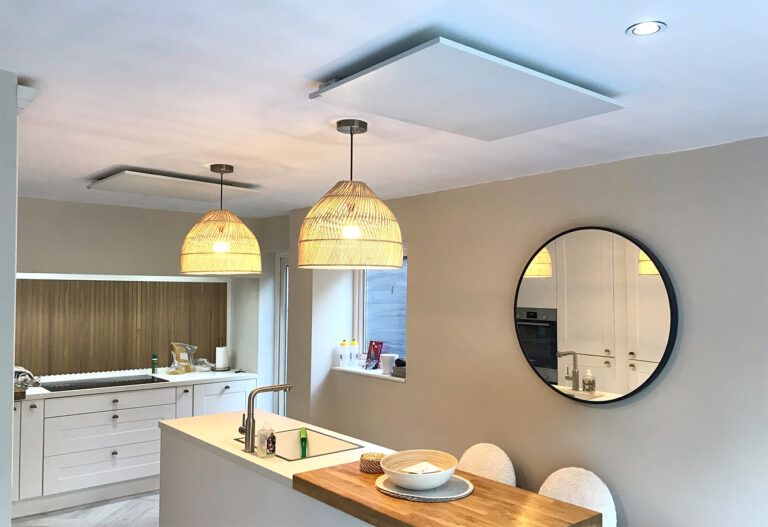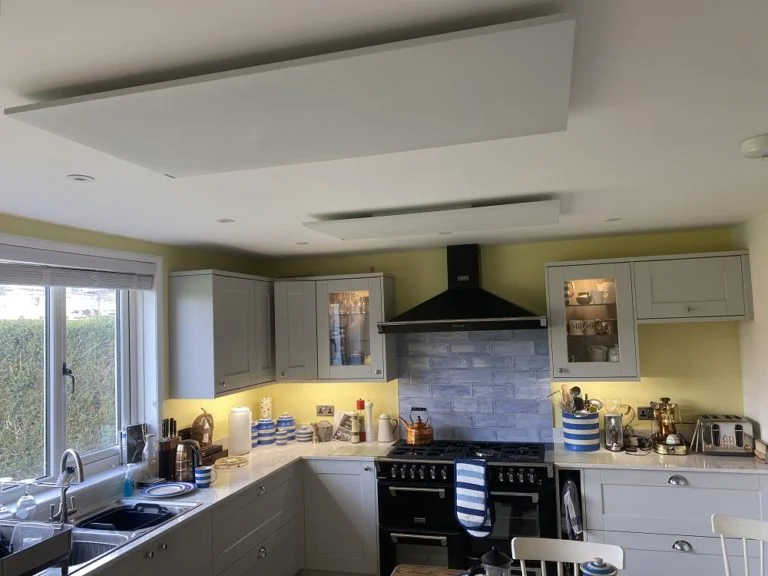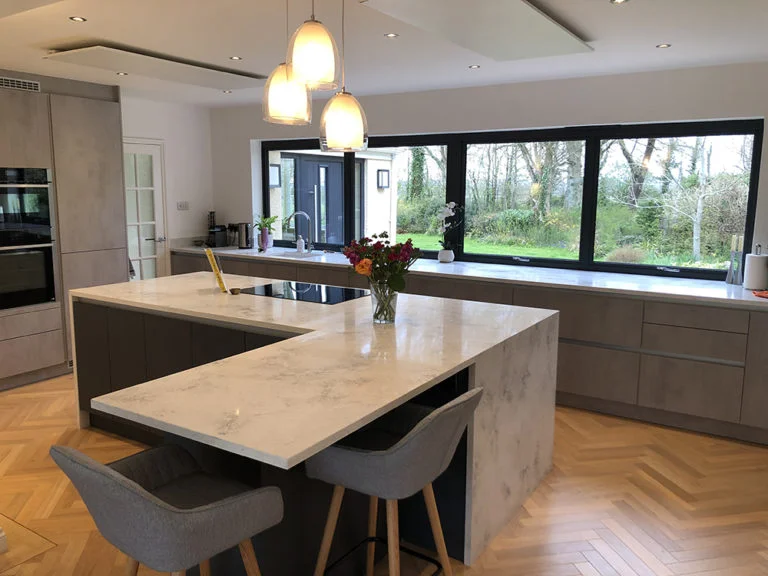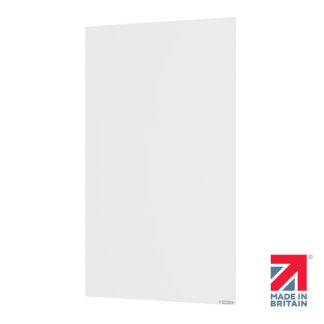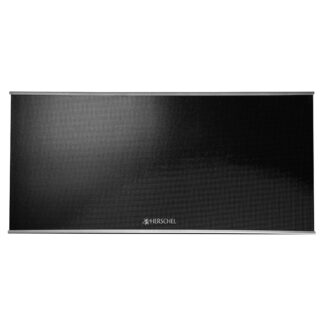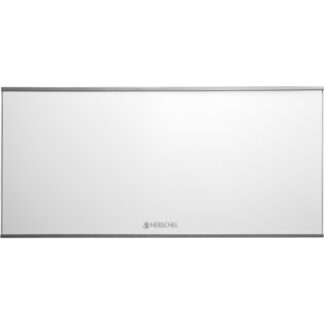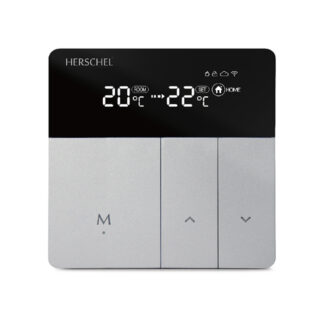No products in the basket.
1950s Remodel with Infrared, Solar & Battery
Infrared, Solar & Battery Chosen Over Heat Pump on Eco House Retrofit
Watch as we share Simon’s incredible story of how he turned a run-down 1950s bungalow into an energy-efficient home using innovative technologies, including infrared heating, solar PV, battery, and a Mixergy water heater, together with a sustainable mindset.
This infrared solar retrofit project, combined with battery, demonstrates what can be achieved to deliver an eco house of the future, and details why this system was chosen over a heat pump.
See Simon’s inspiring journey
Background
Simon wanted to remodel and improve the energy performance of his run-down 1950s bungalow to as high a standard as he could. Embarking on an eco-project, Simon has worked with the existing structure of the bungalow (1950ft² internal floor area), instead of knocking it down and starting from scratch, recognising the environmental impact of demolishing and rebuilding.
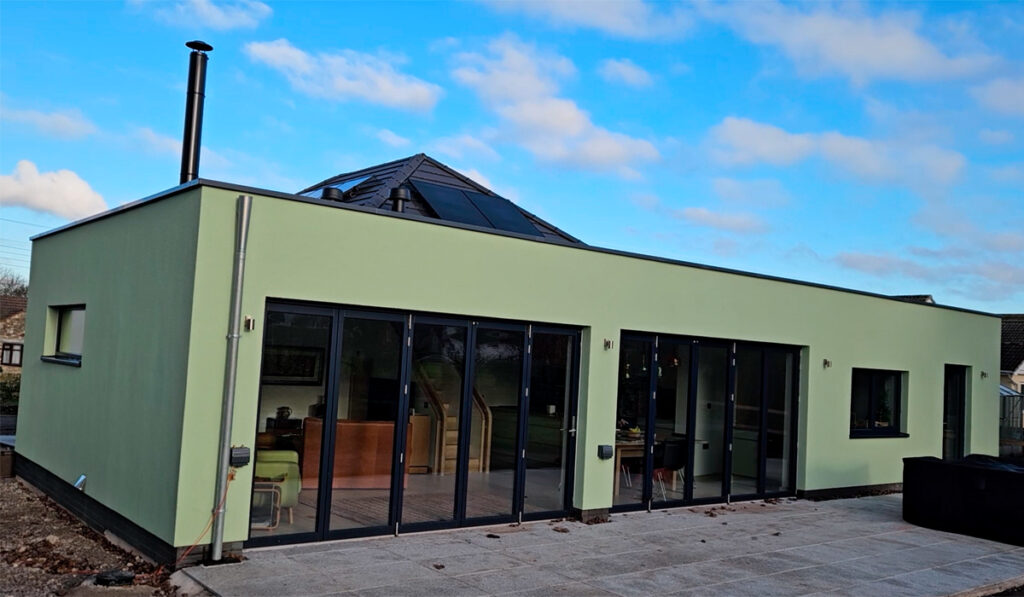
When considering heating solutions, a heat pump-based system was ruled out due to the costs and associated practicalities for his project. Simon has created a very well-insulated home (to EnerPhit Standard) and, for him, an air source heat pump would mean spending a lot of money on something you’re hoping will not be used very much. Instead, Simon allocated his budget to installing infrared heating plus a complete solar panel and battery system – all for a similar cost to that of a heat pump system.
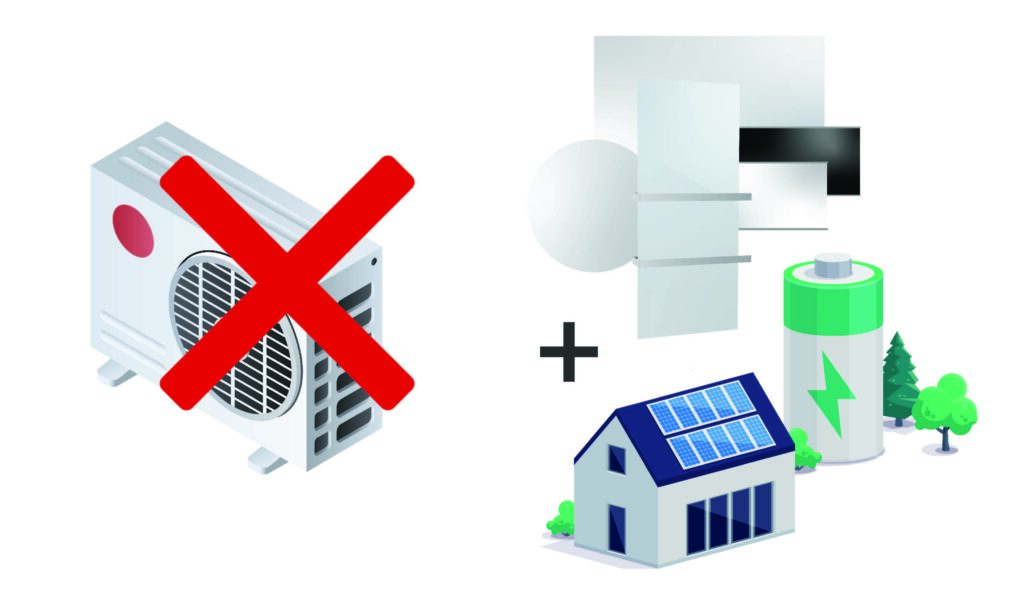
Solution
Simon has installed a range of Herschel Infrared panels throughout his eco home; including the Krystal White and Black, Select XLS Towel Heater, Select XLS Round, Select XLS White, and the UK-made Comfort white panels. His experience with using infrared heaters has been very positive, they are using less energy than estimated plus there are savings in maintenance and upkeep costs.
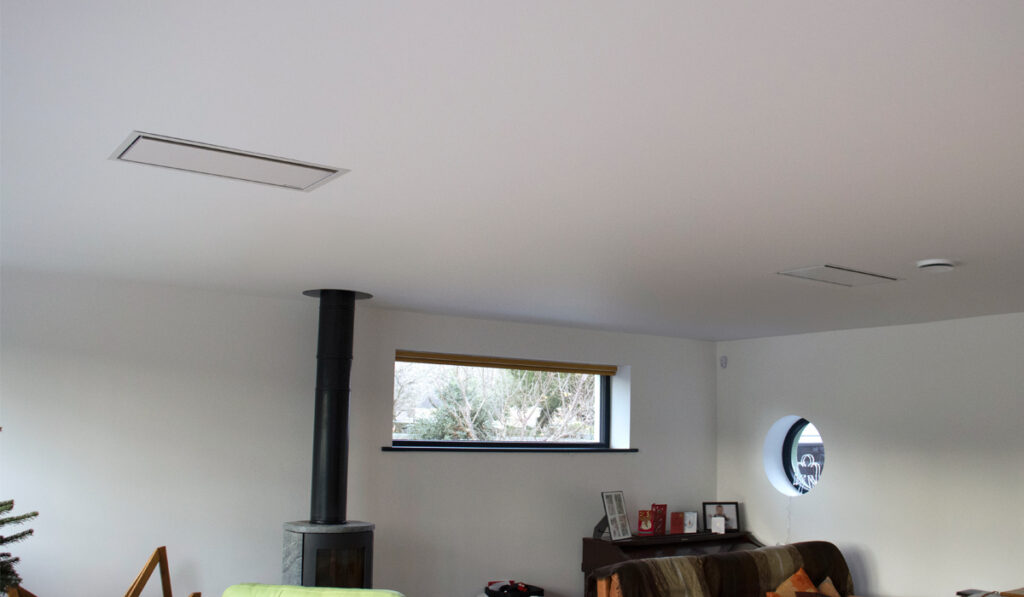
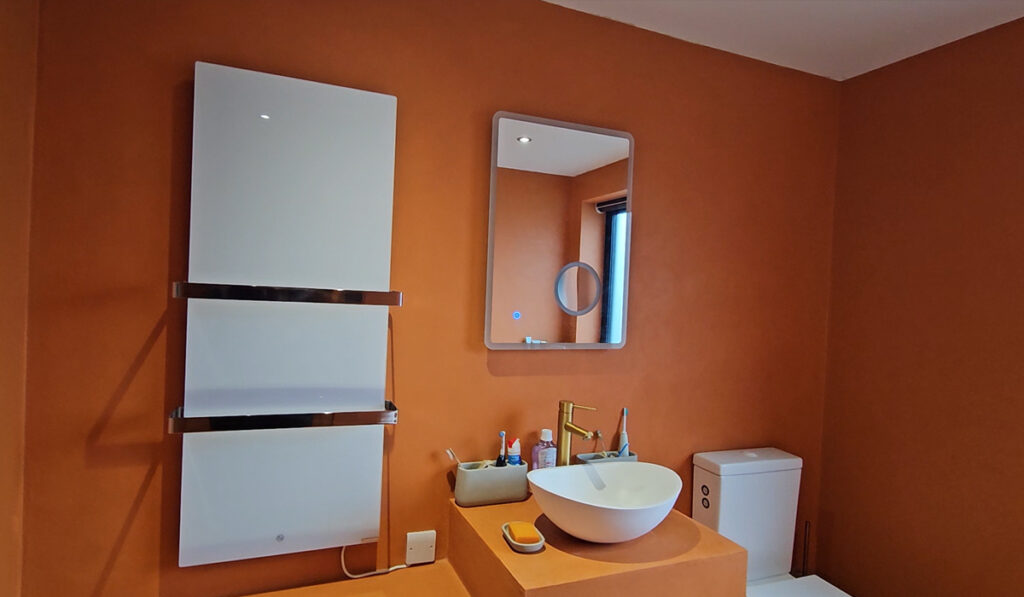
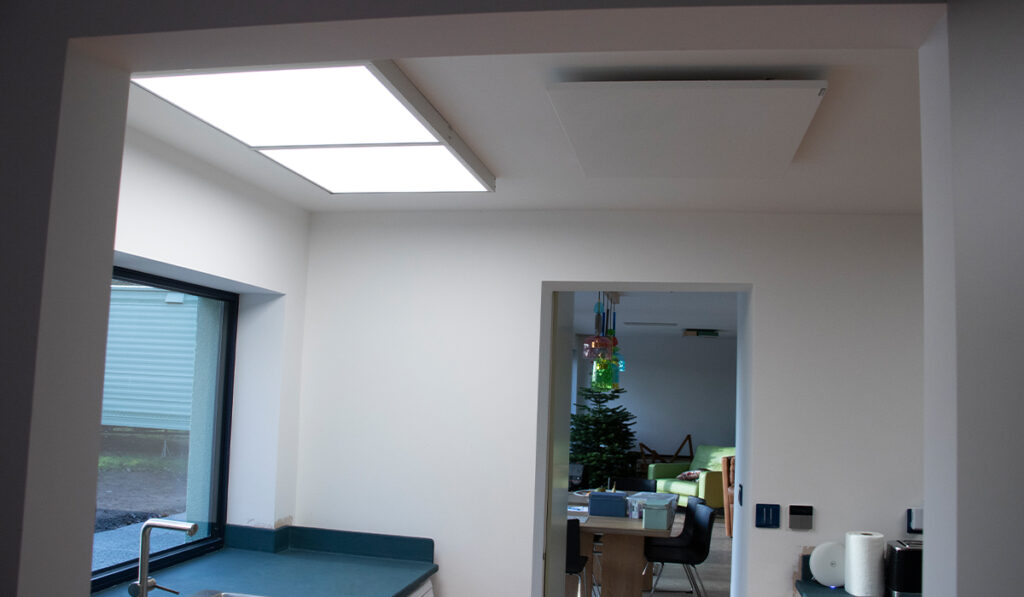
Simon also explains how the infrared panels provide a very comfortable heat, and, as a result, he is able to run the thermostats a degree or two lower than they did previously, with their gas fired central heating boiler.
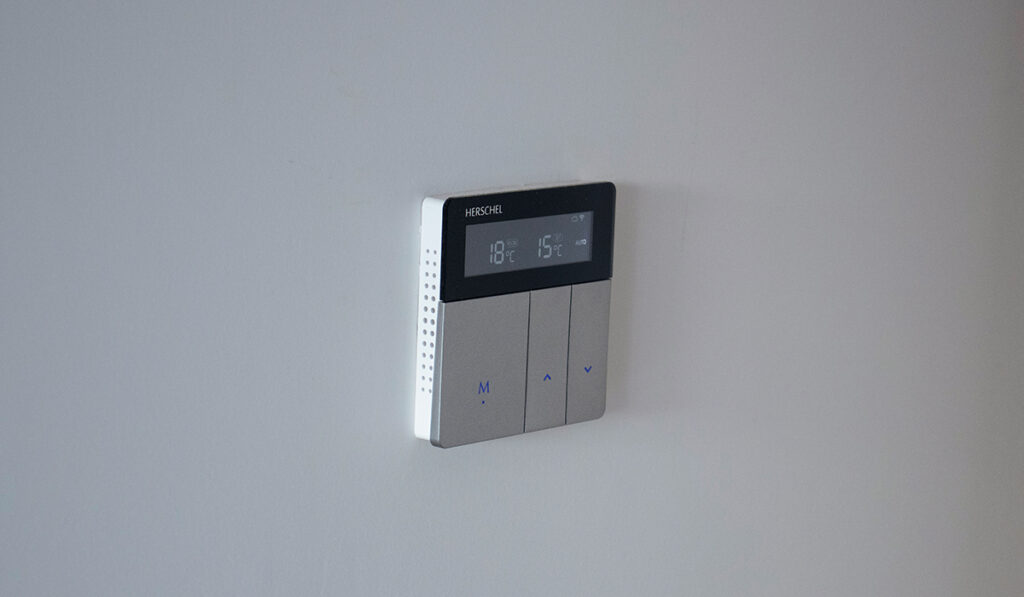
Simon is on an Octopus Flux tariff, meaning he can charge the batteries up overnight at a similar rate to that he gets paid for any energy that is exported back into the grid. Simon estimates that in the winter, three quarters of his energy is coming from the grid at night on a nighttime tariff, charging up batteries. These batteries are then topped up during the day with solar which, in January, is producing about a quarter to a third of his electricity needs.
With the installation of his infrared panels, Simon has estimated that the amount of energy he is getting from the solar panels is what he estimated but the amount of energy that he is using is “quite a bit less” than he estimated. His set up allows him to run his infrared panels in the mornings and evenings without the need to draw from the grid at all during the day.
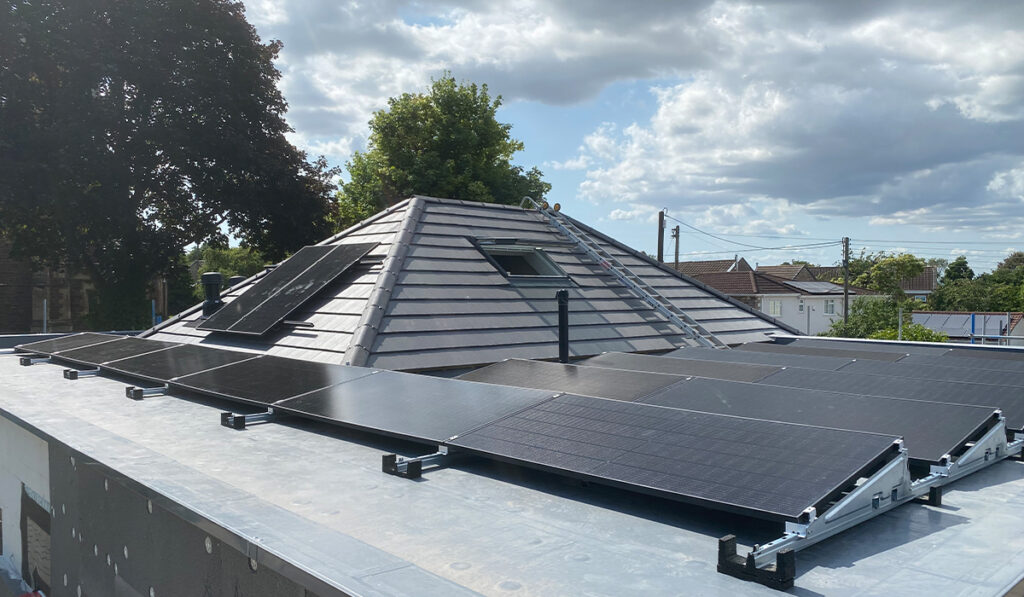
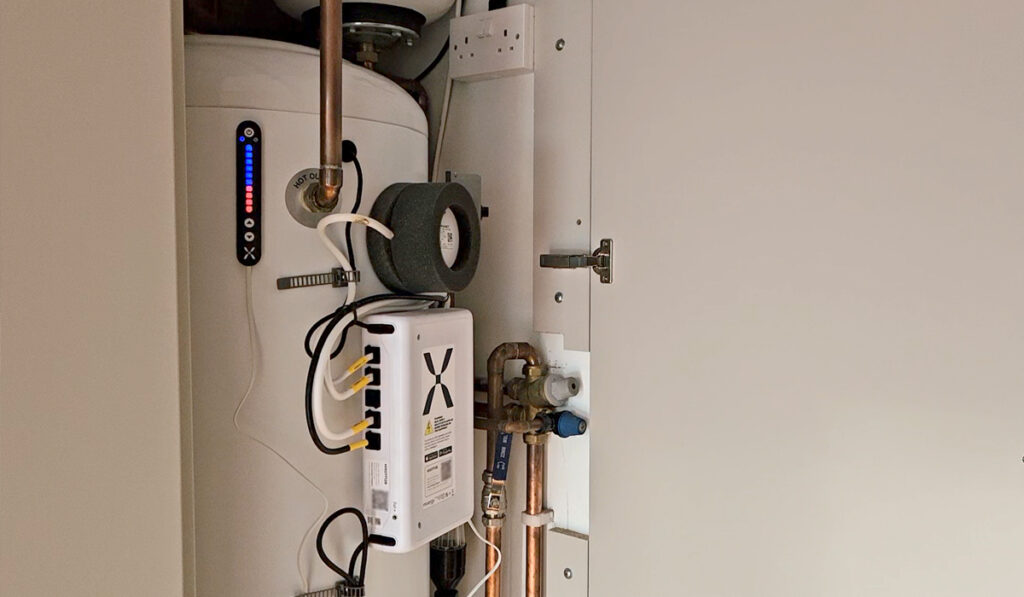
This remodel project, combining infrared, solar and battery storage demonstrates what is achievable in the transition to net zero, decarbonising an older home into an energy efficient, all electric, sustainable eco home.
Contact our Sales Team
If you are embarking on a similar retrofit project and are looking for a sustainable, efficient electric heating solution, then please contact our Sales team today for a free specification. If you would like to experience the heat from our heaters, you can also book a visit to our Showroom.
Testimonial
Choosing Infrared Heating Over Heat Pumps
I’d seen infrared heaters being promoted, we were interested and decided to try and do some comparisons with using heat pumps. Now we had enough space here to do a ground source heat pump, but when we started looking at the cost, it was just eye watering. Even an air source heat pump, because we’d had to take all the original heating system out of the house, it was all furred up. Some of the radiators didn’t have any heat going to them at all, it was in a terrible state, so it all had to come out.
The first obstacle was really if we’d gone for an air source heat pump, we would have wanted to put underfloor heating in but the biggest challenge we’ve had with this house has been the floors they’re all solid floors throughout, it’s not really practical to get sufficient insulation into them to make underfloor heating, a practical proposition. So, we ruled out underfloor heating, which made us a bit twitchy about having an air source heat pump. Because this is an open plan living space, we haven’t got a lot of free wall area to put radiators on.
And the big realisation that we came to was that for the price for what it would cost to put an air source heat pump in, a complete wet system, we could have infrared panels plus a complete solar panel and battery system, as it’s turned out, the solar panel and battery system plus the infrared panels are probably a little bit more expensive than an air source heat pump, but it’s not wildly different.
One of the frustrations about producing a very well insulated home is that. If you put something like an air source heat pump in, you’re spending a lot of money on something that hopefully you’re not going to be using very much. Whereas by putting most of the money into solar panels and batteries, they’re bringing benefit every day of the year, right the way through the summer and the winter.
By having infrared panels, we’ve got no maintenance costs. We’ve got a much greater degree of control over them; we can turn individual panels on and off whenever we want. We also haven’t got a whole heating system to heat up; we haven’t got all the issues associated with wet heating systems. So, the ongoing running costs – not just the energy costs, but the maintenance and the upkeep costs – are also going to be much lower. I think we really want to, in the future, exploit as much as we can that great controllability that you’ve got from being able to switch on and off each individual panel almost, certainly by room.
The full testimonial can be heard on the video here.


